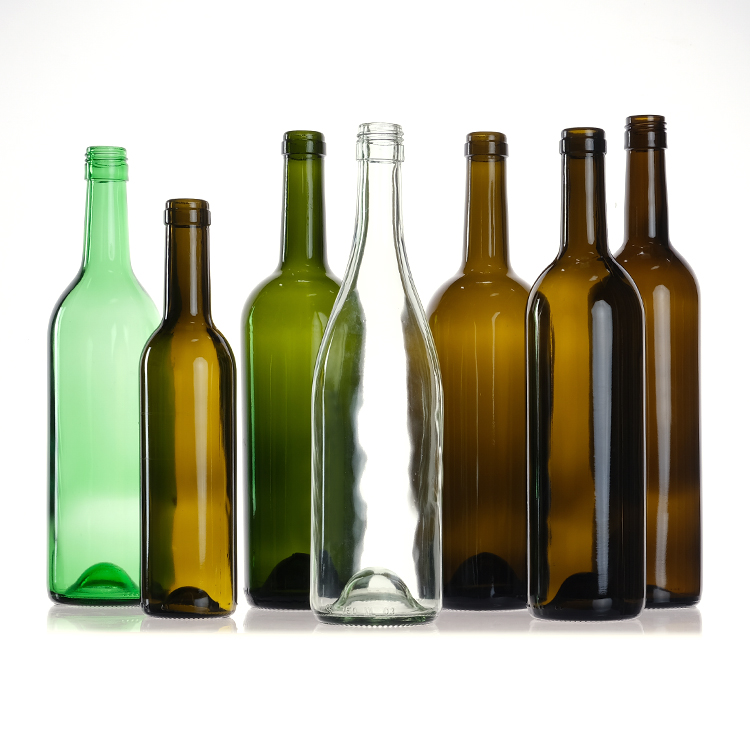A comprehensive resource on the various shapes and sizes of wine bottles.
A comprehensive resource on the various shapes and sizes of wine bottles
What are the different wine bottle sizes and names?
Wine bottles come in twelve different sizes, spanning from 18.7 cl (or 187 ml) to a maximum of 18 litres. However, current EU regulations limit still wine bottles to 10 litres and sparkling wine bottles to 9 litres.
Bottles with a capacity of 3 litres or less are typically referred to by their volume, whereas those that are larger take their names from characters found in the Bible. The reason for this naming tradition is not clearly known.
18.7 cl (187.5 ml) Piccolo or Split: a small bottle typically utilized for individual servings in convenience stores, travel, and the hospitality industry.
37.5 cl (375 ml) Demi or Half: this size is equal to half of a standard wine bottle.
75 cl (750 ml) Standard wine bottle: this is the typical size you’ll encounter at your neighborhood wine shop.
1.5 liters Magnum: this bottle contains the volume of two standard wine bottles.
A 3-litre Double Magnum has the same volume as four regular wine bottles.
The 4.5-litre Jéroboam can accommodate six standard bottles of still wine. However, when it comes to sparkling wine, a Jéroboam typically matches the capacity of a Double Magnum, while a 4.5-litre bottle of champagne or sparkling wine is referred to as Rehoboam.
An Impériale, which holds 6 litres, is equal to eight standard bottles of still wine. In the realm of sparkling wines, this size is known as Methuselah.

What are the standard wine bottle shapes?
The diverse shapes of wine bottles stem from distinct traditional glassblowing techniques used in different areas, rather than being a reflection of winemakers’ efforts to improve wine quality. Similar to bottle sizes, the shapes of wine bottles are largely uniform globally. Most wines available in stores are presented in five standard designs, each named after the wine regions where they were first created and utilized for their signature wines.
Knowing the basic shapes can be a useful clue to identifying the style of wine before even reading the label.
Alsace bottle
Commonly referred to as a Germanic bottle, this type features a taller and slimmer design compared to other varieties, characterized by softly sloping shoulders. The primary grape found in Alsace bottles is Riesling. Typically, bottles for French Riesling are brown, whereas those for German Riesling tend to be green.
Bordeaux bottle
You are likely to encounter this type of bottle more than any other. A Bordeaux bottle features a cylindrical form, characterized by its upright sides and prominent shoulders, which connect the main body to the neck. While Cabernet Sauvignon and Merlot blends dominate the wine scene in Bordeaux, this bottle design is commonly used for a wide variety of wines.
Burgundy bottle
The Burgundy bottle is primarily utilized for Chardonnay, and it is also frequently used for Sauvignon Blanc and Pinot Noir. It features a longer neck compared to the Bordeaux bottle and has unique sloping shoulders, giving it a conical appearance.
Champagne bottle
Champagne and other sparkling wine bottles, such as Cava and Prosecco, may look similar to Burgundy bottles, but they are constructed to be heavier and sturdier. This added weight is necessary to withstand the elevated pressure created during the fermentation process of these wines.
Port bottle
The primary vessel for Port, Sherry, Madeira, and various fortified wines is distinctively designed. While it may appear similar to a Bordeaux bottle, it features a notable distinction: the neck of a Port bottle includes a bulb that helps capture any sediment when pouring.
Provence bottle
The bottle's design is reminiscent of a bowling pin, an hourglass figure, or even a corset. As indicated by its name, this bottle originates from C?tes de Provence, a renowned area known for its rosé wines. Given the popularity of rosé at the moment, you're likely to encounter this distinctive bottle shape while browsing for wine.
Why do wine bottles have a concave bottom?
You might have questioned the reason behind the indent at the base of a wine bottle. This concave feature is referred to as a punt or kick-up. While punts do not enhance the wine's quality, they serve practical purposes in both the production and serving processes.
For Champagne and sparkling wines, the punts are typically deeper, as this design reinforces the glass to handle the high pressure within. Additionally, a deeper punt facilitates easier lifting of the bottle by suction during the production of sparkling wines. It also allows for better thumb support while pouring.
The inclusion of a punt increases the expense of producing a bottle since it uses more glass. While bottles without punts are more economical to manufacture, the presence of a punt does not reflect the wine's quality; instead, it is simply a matter of aesthetic choice by the winemaker.
When you visit your nearby wine shop next time, take note of the various shapes and designs you come across.